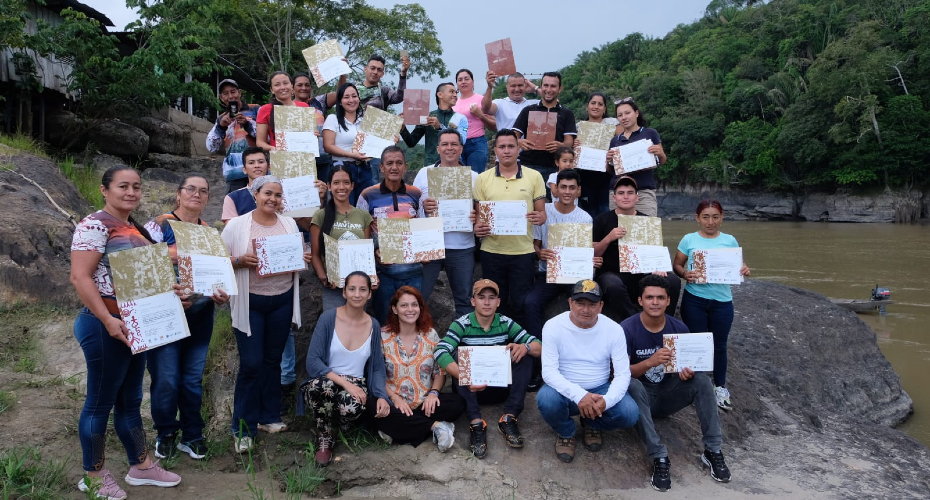Indigenous communities in Colombia’s world-renowned Amazonia region are celebrating the graduation of a first cohort of students who will help to establish and nurture the growth of sustainable cultural heritage tourism.
More than 40 students – many of them from rural villages in the Guaviare department in the south of the country – have become the inaugural ‘heritage guardians’ entrusted to protect the region’s internationally-significant rock art.
The students have learned about the archaeological heritage of their country, the value of cultural mediation and the origins and nature of the rock art of Serranía de La Lindosa. And as part of the unique UK-Colombia partnership, three fellows from the course have visited major UK archaeological attractions including Stonehenge to understand how such sites are preserved and presented to tourists in other countries.
The Diploma in Cultural Heritage Management has been co-created by the University of Exeter and Colombian partners from the University of Antioquia, the Secretariat of Culture and Tourism of Guaviare Department, and the Geographical Society of Colombia.
It follows on from extensive archaeological fieldwork conducted by researchers in Exeter’s Department of Archaeology and History through the LASTJOURNEY project. Launched in 2019 and funded by a €2.5m grant from the European Research Council, LASTJOURNEY has made a number of archaeological discoveries, including documenting the arrival of the first humans in the north-western Amazon almost 13,000 years ago. This work has been made possible following a peace agreement between the Colombian government and the FARC guerrilla organisation which has enabled researchers to obtain access to the region.
“Since the beginning of the peace process in the Colombian Amazon in 2016, the world-class rock art heritage of Serrania de la Lindosa has fostered a growing tourism industry that, to date, has been mainly served by local community guides with an empirical and self-taught background,” says Professor José Iriarte, project lead. “The region has an exceptional cultural and natural heritage, but there’s been no academic training that might support and drive positive social transformation. Through this diploma, however, we have been able to address that gap, and support a sustainable economic model based on cultural heritage tourism, which will serve to protect these sites from damaging activity.”
The Diploma was part-funded by the Arts and Humanities Research Council’s (AHRC) Impact Acceleration Account, and consisted of three 30-hour modules that were taught in the local rural communities of Cerro Azul, Nuevo Tolima and Raudal del Guayabero by academics from Exeter and Antioquia. These selected diploma holders had the opportunity to learn first-hand about rock art from Exeter’s Prof Jamie Hampson and Dr Barbara Oosterwijk, as well as experimental archaeology with Prof Linda Hurcumbe and site interpretation with Dr Susan Greaney.
As part of the project, three ‘fellows’ were flown to the UK and taken by Exeter staff to visit Stonehenge, the Ancient Technology Centre in Dorset, and the RAMM in Exeter to learn how cultural artefacts are preserved and showcased to visitors. These fellows will now share what they have learned with other communities in the Guaviare department.
“For many people in Colombia, it can be a struggle to find a place in a society against a backdrop of dissident violence, deforestation for cattle grazing and coca growing,” says Professor Iriarte. “This diploma empowers these people – and through knowledge transmission, their communities – to find a sustainable economic alternative. And this in turn will help to safeguard the biocultural heritage of this remarkable land.”
“The Colombian Institute of Anthropology and History has declared this an ‘Archaeological Protected Area’,” adds Javier Aceituno, Professor of Archaeology at the University of Antioquia. “However, as is the case in most national parks in Amazonia, very few resources are provided to enforce or empower that. The rock paintings need the people, and the people need the paintings, so this diploma is designed to strengthen that equation; it is a win-win solution.”

